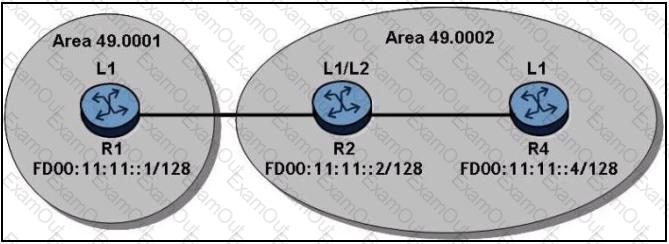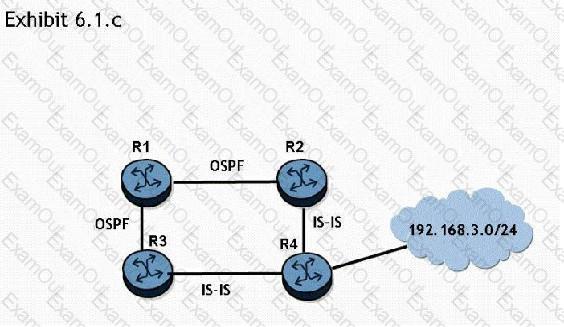If routers R1 and R2 have a Level 1 and Level 2 IS-IS adjacency, which of the following statements are true? Choose two answers.
Which of the following statements regarding IS-IS DIS is false?
Which of the following is not one of the MT topologies defined for IS-IS?
Which of the statements below best describes the operation of the IPv6 anycast address?
Which of the following statements regarding OSPF routing updates on a point-to-point link is true?
Refer to the exhibit below.

R1 distributes its loopbacks into IS-IS and globally routed addresses are configured as shown. How many routes will R4 have in its IPv6 route table?
How are LSPs acknowledged on IS-IS broadcast links?
Click the exhibit button.

If router R2 redistributes the IS-IS route to 192.168.3.0/24 into OSPF, router R3 preference of these two routes? Choose two answers.
Click the exhibit button.

For the IS-IS network shown, and assuming point-to-point links, what adjacencies will router R1 establish?
Which of the following features are supported by IS-IS? Choose three answers.

